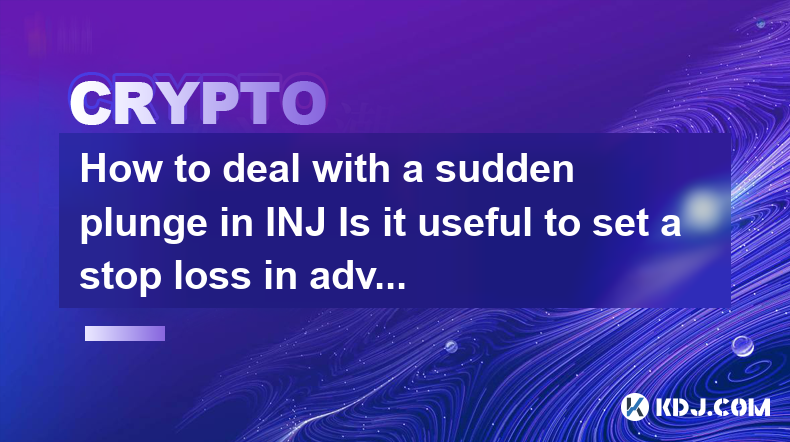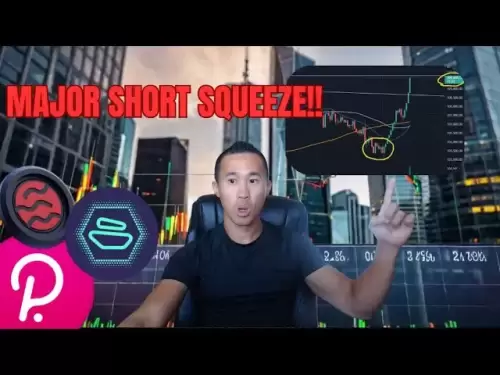-
 Bitcoin
Bitcoin $108,270.9768
2.07% -
 Ethereum
Ethereum $2,489.8066
2.50% -
 Tether USDt
Tether USDt $1.0004
0.01% -
 XRP
XRP $2.2035
0.66% -
 BNB
BNB $661.6608
2.32% -
 Solana
Solana $150.6425
2.13% -
 USDC
USDC $0.9999
-0.01% -
 TRON
TRON $0.2810
0.90% -
 Dogecoin
Dogecoin $0.1645
3.05% -
 Cardano
Cardano $0.5743
4.91% -
 Hyperliquid
Hyperliquid $38.8419
-0.15% -
 Bitcoin Cash
Bitcoin Cash $504.3134
-2.64% -
 Sui
Sui $2.8096
4.35% -
 Chainlink
Chainlink $13.3095
2.21% -
 UNUS SED LEO
UNUS SED LEO $8.9469
0.33% -
 Avalanche
Avalanche $17.9231
3.93% -
 Stellar
Stellar $0.2340
0.74% -
 Toncoin
Toncoin $2.8458
3.21% -
 Shiba Inu
Shiba Inu $0.0...01158
3.47% -
 Litecoin
Litecoin $86.0738
1.94% -
 Hedera
Hedera $0.1507
2.99% -
 Monero
Monero $319.8544
2.31% -
 Polkadot
Polkadot $3.4081
1.95% -
 Dai
Dai $1.0000
0.01% -
 Bitget Token
Bitget Token $4.5645
0.91% -
 Ethena USDe
Ethena USDe $1.0002
0.00% -
 Uniswap
Uniswap $7.2959
5.27% -
 Aave
Aave $272.4623
2.90% -
 Pepe
Pepe $0.0...09680
2.96% -
 Pi
Pi $0.4955
0.78%
How to deal with a sudden plunge in INJ Is it useful to set a stop loss in advance
Sudden plunges in INJ are common due to market volatility; setting a stop loss can help manage risk by automatically selling at a predetermined price.
May 02, 2025 at 07:42 pm

Understanding the Sudden Plunge in INJ
When dealing with cryptocurrencies like INJ (Injective Protocol), it's crucial to understand that sudden plunges are not uncommon. The volatile nature of the crypto market means that prices can fluctuate dramatically in a short period. A sudden plunge in INJ could be triggered by various factors such as market sentiment, regulatory news, or broader economic conditions. Recognizing the reasons behind a plunge can help in making informed decisions about how to react.
The Role of Stop Loss in Crypto Trading
A stop loss is an order placed with a broker to buy or sell once the stock reaches a certain price. In the context of cryptocurrencies, setting a stop loss can be a useful tool for managing risk. It helps traders limit their losses by automatically selling the asset when it reaches a predetermined price level. This can be particularly beneficial in a highly volatile market like INJ, where sudden price drops can occur without warning.
How to Set a Stop Loss for INJ
Setting a stop loss for INJ involves a few steps that can be followed on most trading platforms. Here's how you can do it:
- Log into your trading platform: Ensure you are logged into the platform where you hold your INJ.
- Navigate to the trading section: Find the section where you can place orders for INJ.
- Select the stop loss order type: Most platforms will have an option for a stop loss order. Choose this type of order.
- Set the stop price: Decide on the price at which you want the stop loss to trigger. This should be a price you are willing to sell INJ at to limit your losses.
- Confirm the order: Once you have set the stop price, confirm the order. The platform will now monitor the price of INJ and execute the sale if it reaches your stop price.
Is Setting a Stop Loss Useful for INJ?
Setting a stop loss for INJ can be highly beneficial, especially given the asset's volatility. It provides a safety net, ensuring that you do not suffer significant losses if the price of INJ suddenly drops. However, it's important to set the stop loss at a reasonable level. Setting it too close to the current price might result in the order being triggered by normal market fluctuations, while setting it too far away might not protect you adequately from a significant plunge.
Considerations When Using Stop Loss with INJ
When using a stop loss with INJ, there are several considerations to keep in mind:
- Market Gaps: In highly volatile markets, prices can gap, meaning they can jump from one price to another without trading at prices in between. If INJ experiences a significant gap, your stop loss might be executed at a much lower price than you intended.
- False Signals: Sometimes, the market might dip briefly and then recover. If your stop loss is too tight, you might sell INJ during a temporary dip and miss out on potential gains.
- Fees and Slippage: When a stop loss is triggered, you might incur fees and experience slippage, which can affect the final amount you receive from the sale.
Adjusting Stop Loss Orders for INJ
As the market conditions change, it might be necessary to adjust your stop loss order for INJ. Here's how you can do it:
- Monitor the Market: Keep an eye on the market trends and the performance of INJ.
- Adjust the Stop Price: If INJ is performing well, you might want to adjust your stop loss to a higher price to lock in profits. Conversely, if the market is becoming more volatile, you might want to set a tighter stop loss to protect your investment.
- Use Trailing Stop Loss: Some platforms offer a trailing stop loss, which automatically adjusts the stop price as the market price of INJ moves in your favor. This can be a useful tool for maximizing gains while still protecting against significant losses.
Frequently Asked Questions
Q: Can I set multiple stop losses for INJ on the same platform?
A: It depends on the trading platform. Some platforms allow you to set multiple stop loss orders for the same asset, while others might only allow one active stop loss order at a time. Check your platform's documentation to see what options are available.
Q: What should I do if my stop loss for INJ is triggered during a market dip?
A: If your stop loss for INJ is triggered during a market dip, it's important not to panic. Assess the market conditions and consider whether the dip is likely to be temporary or part of a larger trend. If you believe in the long-term potential of INJ, you might want to buy back in at a lower price.
Q: How often should I review and adjust my stop loss for INJ?
A: The frequency of reviewing and adjusting your stop loss for INJ depends on your trading strategy and the market's volatility. As a general rule, it's a good idea to review your stop loss orders at least daily, especially in a highly volatile market. Adjustments should be made based on significant changes in market conditions or the performance of INJ.
Q: Are there any alternatives to stop loss orders for managing risk with INJ?
A: Yes, there are several alternatives to stop loss orders for managing risk with INJ. These include using options contracts to hedge your position, employing a dollar-cost averaging strategy to spread out your investment over time, or simply setting a mental stop loss where you manually sell if the price reaches a certain level. Each method has its own advantages and disadvantages, so it's important to choose the one that best fits your trading style and risk tolerance.
Disclaimer:info@kdj.com
The information provided is not trading advice. kdj.com does not assume any responsibility for any investments made based on the information provided in this article. Cryptocurrencies are highly volatile and it is highly recommended that you invest with caution after thorough research!
If you believe that the content used on this website infringes your copyright, please contact us immediately (info@kdj.com) and we will delete it promptly.
- Mormon Gold, Rare Coins, and Heritage Auctions: A Collector's Bonanza
- 2025-07-03 02:30:12
- Crypto News Flash: Real-Time Bitcoin Intelligence and XRP's Price Dip
- 2025-07-03 02:35:12
- Whale Supply Dwindles: What It Means for Bitcoin Investors
- 2025-07-03 01:10:12
- Altcoins to Watch: BDAG, APT, and DOT Lead the Charge in the Next Bull Run
- 2025-07-03 01:10:12
- AI Alliance Ignites: FET Price Rally on Horizon as Volatility Hits Rock Bottom
- 2025-07-03 01:50:12
- BONK Price Surge, Dogecoin Patterns, and BlockDAG's Double Up Offer: What's the Buzz?
- 2025-07-03 01:50:12
Related knowledge

How to customize USDT TRC20 mining fees? Flexible adjustment tutorial
Jun 13,2025 at 01:42am
Understanding USDT TRC20 Mining FeesMining fees on the TRON (TRC20) network are essential for processing transactions. Unlike Bitcoin or Ethereum, where miners directly validate transactions, TRON uses a delegated proof-of-stake (DPoS) mechanism. However, users still need to pay bandwidth and energy fees, which are collectively referred to as 'mining fe...

USDT TRC20 transaction is stuck? Solution summary
Jun 14,2025 at 11:15pm
Understanding USDT TRC20 TransactionsWhen users mention that a USDT TRC20 transaction is stuck, they typically refer to a situation where the transfer of Tether (USDT) on the TRON blockchain has not been confirmed for an extended period. This issue may arise due to various reasons such as network congestion, insufficient transaction fees, or wallet-rela...

How to cancel USDT TRC20 unconfirmed transactions? Operation guide
Jun 13,2025 at 11:01pm
Understanding USDT TRC20 Unconfirmed TransactionsWhen dealing with USDT TRC20 transactions, it’s crucial to understand what an unconfirmed transaction means. An unconfirmed transaction is one that has been broadcasted to the blockchain network but hasn’t yet been included in a block. This typically occurs due to low transaction fees or network congestio...

How to check USDT TRC20 balance? Introduction to multiple query methods
Jun 21,2025 at 02:42am
Understanding USDT TRC20 and Its ImportanceUSDT (Tether) is one of the most widely used stablecoins in the cryptocurrency market. It exists on multiple blockchain networks, including TRC20, which operates on the Tron (TRX) network. Checking your USDT TRC20 balance accurately is crucial for users who hold or transact with this asset. Whether you're sendi...

What to do if USDT TRC20 transfers are congested? Speed up trading skills
Jun 13,2025 at 09:56am
Understanding USDT TRC20 Transfer CongestionWhen transferring USDT TRC20, users may occasionally experience delays or congestion. This typically occurs due to network overload on the TRON blockchain, which hosts the TRC20 version of Tether. Unlike the ERC20 variant (which runs on Ethereum), TRC20 transactions are generally faster and cheaper, but during...

The relationship between USDT TRC20 and TRON chain: technical background analysis
Jun 12,2025 at 01:28pm
What is USDT TRC20?USDT TRC20 refers to the Tether (USDT) token issued on the TRON blockchain using the TRC-20 standard. Unlike the more commonly known ERC-20 version of USDT (which runs on Ethereum), the TRC-20 variant leverages the TRON network's infrastructure for faster and cheaper transactions. The emergence of this version came as part of Tether’s...

How to customize USDT TRC20 mining fees? Flexible adjustment tutorial
Jun 13,2025 at 01:42am
Understanding USDT TRC20 Mining FeesMining fees on the TRON (TRC20) network are essential for processing transactions. Unlike Bitcoin or Ethereum, where miners directly validate transactions, TRON uses a delegated proof-of-stake (DPoS) mechanism. However, users still need to pay bandwidth and energy fees, which are collectively referred to as 'mining fe...

USDT TRC20 transaction is stuck? Solution summary
Jun 14,2025 at 11:15pm
Understanding USDT TRC20 TransactionsWhen users mention that a USDT TRC20 transaction is stuck, they typically refer to a situation where the transfer of Tether (USDT) on the TRON blockchain has not been confirmed for an extended period. This issue may arise due to various reasons such as network congestion, insufficient transaction fees, or wallet-rela...

How to cancel USDT TRC20 unconfirmed transactions? Operation guide
Jun 13,2025 at 11:01pm
Understanding USDT TRC20 Unconfirmed TransactionsWhen dealing with USDT TRC20 transactions, it’s crucial to understand what an unconfirmed transaction means. An unconfirmed transaction is one that has been broadcasted to the blockchain network but hasn’t yet been included in a block. This typically occurs due to low transaction fees or network congestio...

How to check USDT TRC20 balance? Introduction to multiple query methods
Jun 21,2025 at 02:42am
Understanding USDT TRC20 and Its ImportanceUSDT (Tether) is one of the most widely used stablecoins in the cryptocurrency market. It exists on multiple blockchain networks, including TRC20, which operates on the Tron (TRX) network. Checking your USDT TRC20 balance accurately is crucial for users who hold or transact with this asset. Whether you're sendi...

What to do if USDT TRC20 transfers are congested? Speed up trading skills
Jun 13,2025 at 09:56am
Understanding USDT TRC20 Transfer CongestionWhen transferring USDT TRC20, users may occasionally experience delays or congestion. This typically occurs due to network overload on the TRON blockchain, which hosts the TRC20 version of Tether. Unlike the ERC20 variant (which runs on Ethereum), TRC20 transactions are generally faster and cheaper, but during...

The relationship between USDT TRC20 and TRON chain: technical background analysis
Jun 12,2025 at 01:28pm
What is USDT TRC20?USDT TRC20 refers to the Tether (USDT) token issued on the TRON blockchain using the TRC-20 standard. Unlike the more commonly known ERC-20 version of USDT (which runs on Ethereum), the TRC-20 variant leverages the TRON network's infrastructure for faster and cheaper transactions. The emergence of this version came as part of Tether’s...
See all articles

























































































